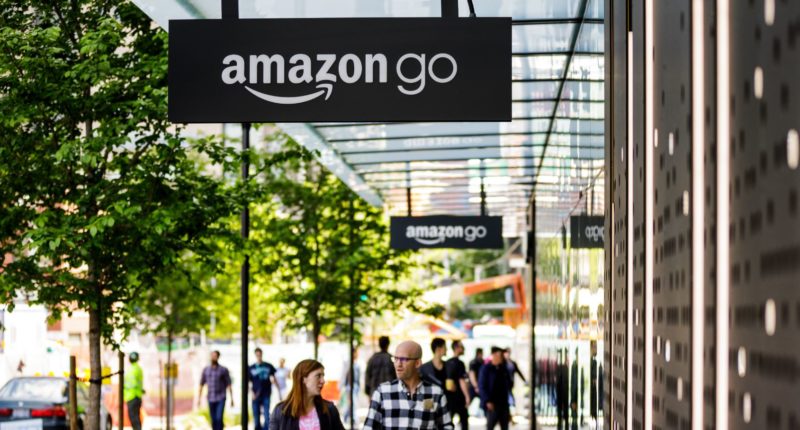Of all the things that the COVID-19 pandemic has done to the world in recent times, the landslide shift in technology has been the most noticeable one. Amazon is a contributor to this change, and is following that trend by introducing a new contactless payment method when entering the Amazon Go stores, called Amazon One.
Amazon One is a payment device based on a biometric system that scans your palm to receive a payment from you and permits you to enter a store. The ‘contactless’ device registers your credit card along with your ‘palm signature’ and will let you enter the store in the future just by hovering your palm over the device.
The company believes palm biometric is much safer than any other form of biometric and thus has opted to go for palm recognition for the Amazon One device. The device will use computer vision technology to scan and create a unique palm signature of a customer. The palm images captured will be encrypted and stored in a secured area in the cloud, according to Amazon, so you don’t have to worry about security.
The Amazon One devices are to be introduced first at two Amazon Go stores in Seattle and won’t completely replace the existing means of entering the store. Amazon Go is an advanced technology shopping store from the company that doesn’t require any checkouts after shopping. Customers can just enter the store by using an Amazon account and an Amazon Go app and shop without worrying about checking out, which is done automatically by the ‘Just Walk Out’ technology. Later, the bill is attached to the customer’s Amazon account. Amazon One would be an added feature to this shopping process.
Amazon also plans to share this technology with third party retailers and is already in talks regarding that. This is in line with an announcement made by the company earlier this year, where it promised to sell its cashierless checkout tech to other companies. It hopes that Amazon One is used at stadiums and office buildings for entrance in the future.
While this new tech does seem fascinating, it can have its own drawbacks. For example, the idea of hovering palms over a device is not something usually customers are accustomed to. Most probably, customers while entering a store, would tend to press their palm on the device rather than hovering over it. This is a serious issue given the norms of the pandemic, where no one would want to touch a device that has been touched by a hundred others.
The question of security is also raised here as Amazon is linking a customer’s credit card to its palm signature. It becomes essentially important for the e-commerce giant to create that trust among the customers who will give away their palm biometrics and card details for Amazon One.
The Tech Portal is published by Blue Box Media Private Limited. Our investors have no influence over our reporting. Read our full Ownership and Funding Disclosure →






